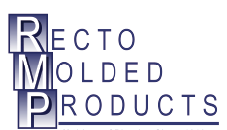A Detailed Look at the Quoting Process for Plastic Injection Molding
Firsthand Advice from a Injection Molding Expert
 How do molders go about determining the appropriate price for an application?
How do molders go about determining the appropriate price for an application?
When a molder receives a print or a solid model and production quantity, the conservative first pass or ballpark pricing will always reflect the unknowns that can–and often do–surface later down the line. The more upfront data provided to the molder, the more accurate and typically lower the upfront price. This data can include a wide range of factors such as yearly consumption, specific color requirements, special packaging, payment terms, and quality specifics. And these are just a few of the aspects that the molder will ask about.
A case study in why having complete information is important
Perhaps the most difficult request that plastic injection molders can receive is a request for a part price on something that is currently being made through a different supplier. This could be for a simple ‘price check’, an attempt to find a new supplier, or ‘reshoring’ parts previously made offshore.
Regardless of the reason, these types of quote requests often come with a history that the customer may not be aware of, such as:
- The material used and how it might be colored
- The number of cavities in the mold
- The required cooling time
- The type of mold steel used
- The condition of the tooling
- The use of edge gates or sub-gates
- Is extended cooling time required due to inadequate ejection
- The potential for dimensional or warpage issues
And the list goes on.
Bringing as much information as possible is important for an accurate initial price. However, the molder will always have questions, and answering them as thoroughly as possible will give them the information that they need. Bringing sample parts can be a large benefit, as well as any information on the mold itself and its design, such as the knockout pins, parting lines, gates, cavities, and more.
What happens with a preliminary design?
The other type of quote request that molders typically get is for a preliminary design for a component, often including a 3D model of the part as well. Other information should be included as well, such as the function of the part, the environment that it will need to withstand, assembly concerns, and any cosmetics required. The more the molder knows about the entire product, the more successful the project will be.
With a new design to quote, design questions regarding draft angles, cosmetic surfaces, loads, temperatures, colors, assembly techniques, location and quantity of ejectors, gates, parting lines, areas where warpage may occur (flatness), the use of threads versus self-tapping screws, molded in place metal inserts, thick walls, and sink are all considered. Features such as undercuts, which can be designed out of the part, reduce tooling costs.
Who chooses the materials?
Material decisions are typically made in collaboration between the molder and the customer, but they depend heavily on the experience of the injection molder. Molders prefer materials that they can source in large quantities at reasonable costs, with many inventory turns per year–and their customers benefit from the molder’s expertise, getting lower prices and faster deliveries.
As an example, the short-run part that needs 50 pounds of a specific material a year and can only be purchased from the requested source in 2,000-pound minimum quantities is not a good fit with pricing and long-term inventory issues.
Having a molder with extensive material application knowledge is invaluable in all cases.
Who chooses the tooling?
Experienced molders will typically source the tooling for a project, based on the parts that they make and their own personal preferences. For instance, Aluminum tooling is less expensive but doesn’t last as long as fully hardened tool steel. At Recto, we avoid aluminum molds and typically use hardened steel or a similar material. Some molders use them exclusively. Aluminum molds running 30% glass-filled polymers don’t last long, while the same molds running polyethylene can function very long with little to no damage to the cavity.
When a customer starts the conversation with the statement, “We will only need 100 parts, ” aluminum must be considered, as it’s a cheap material that will last long enough for the run. However, aluminum isn’t a feasible choice for large production runs of thousands to tens of thousands of components. In such cases, hardened steel molds are the more cost efficient choice, despite being more expensive upfront.
A case study in material selection and experience
The more experienced the quoter has become, the more questions are asked, and experience is a great educator. Many mistakes/missteps have made the quoter wary of missing information, which has a significant effect later.
A good example was an application for a coffee vending machine, a solenoid dispensing valve. Requirements were for boiling water, chemical resistivity for coffee, cleaning agents, and suitable long-term seal surfaces. CPVC was initially chosen, but before the ink was dry on the tooling purchase order, a change to Polysulfone was requested.
A material supplier had convinced the customer that the CPVC was not the correct choice, but their material was better. The molder, who was inexperienced, agreed to the change on the conditions that the material supplier had to have technical responsibility from tool design to initial samples and testing.
Six months later, and two production shipments later, the customer reported that the parts were cracking during assembly. When the molder went to investigate the issue, they discovered that the assembly operation was taking place next to the floor’s solvent welding operation. Polysulfone, the material requested by the customer, is susceptible to solvent attack. The solvent operation was moved, but the customer never used Polysulfone again.
The moral of the story is this–not all material selections should be made from data sheets. Tensile strength is not an indicator of impact strength as much as good elongation values, and high modulus with low elongation is only sometimes a stronger part. Not until the material is brought into real world conditions does it truly prove its worth.
Conclusion
The quoting process of any plastic injection molding project often has an extensive impact on the quality of the overall relationship between the company and the customer. Not until the customer says that the molder has done their job and done it well, has the molder earned their customers’ trust.
